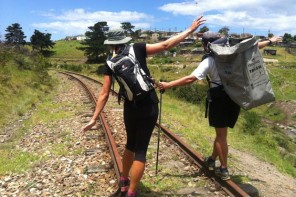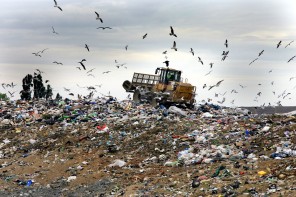Written by: Bongani Nkosi
The Manyeleti Nature Reserve in Mpumalanga is set to become one of South Africa’s premier ecotourism destinations, following an investment of R400-million (US$54.9-million) to upgrade the facility.
This was announced by the Mpumalanga Tourism and Parks Agency (MTPA) at a press briefing in Johannesburg on 6 September 2010. MTPA will officially introduce the project on 26 September at a ceremony expected to attract big names in the tourism industry, government officials and journalists.
The development of Manyeleti, which means “place of the stars” in the local Xitsonga language, is being funded by both the public and private sectors.
The 23000ha park is already home to the big five – lion, leopard, elephant, rhino and buffalo – as well as a variety of other wildlife. It shares fenceless borders with the famed Kruger National Park and the private Sabi Sands and the Timbavati reserves, which enables game to move freely over a vast area.
The Manyeleti project is being modelled on the successful Madikwe Game Reserve in the North West province, whose development empowered surrounding communities. MTPA said Manyeleti will “improve the province’s long-term revenue stream from tourism” and create about 600 permanent jobs over the next two years.
Top-class lodges
The new plans have been endorsed by the Manyeleti Conservation Trust, which owns the land. The trust represents land claim beneficiaries, mostly of the Mnisi clan, who stand to benefit from increased businesses at the reserve.
Manyeleti is one of four reserves in Mpumalanga where the MTPA has settled claims and co-management agreements with land owners in 2010. The others are Mdala Nature Reserve, the SS Skosana Nature Reserve and the Mabusa Game Reserve, according to the agency’s chief executive Charles Ndabeni.
About R350-million ($48-million) will be channelled into developing four new lodges to complement the existing three at Manyeleti. Each of the seven facilities will offer 48 or more beds, which will help MTPA to reach its target of accommodating 350 people at the reserve.
The three existing accommodation establishments – the five-star Tintswalo Safari Lodge and the three-star Honeyguide Camp and Khoka Moya Camp – are all specialists in safari tours.
MTPA will spend R21-million ($2.9-million) upgrading Manyeleti’s infrastructure, while the remaining funds will be used to establish an empowerment company that will offer game drives at the lodges.
The marketing of Manyeleti and the other reserves in Mpumalanga is still a financial challenge, though, according to Ndabeni. “Our biggest challenge, unfortunately, is lack of budget for marketing,” he said.
World Cup drives tourism
An additional R9-million ($1.2-million) was used to partially upgrade Manyeleti before the 2010 Fifa World Cup. The revamp was among other projects which MTPA undertook to beef up the province’s tourism offerings ahead of the tournament. One of the other facilities set up was a visitor information centre worth R8.5-million ($1.1-million).
Mpumalanga is aware that the World Cup success could have a lasting effect on its tourism sector. “We’re hoping that having delivered one of the best World Cups, there will be a boom of tourism in the province,” said Economic Development, Environment and Tourism MEC Jabu Mahlangu.
The province hosted some of the World Cup matches at the 46 000-capacity Mbombela Stadium, which “we’ll be using for our mega-tourism initiatives”, Mahlangu said.
Tri-national relations
During and after the tournament Mpumalanga saw a growing number of tourists from Swaziland and Mozambique, its neighbouring countries. “We’ve already seen an increase of tourists in our province,” according to the MEC.
“We have an advantage of being neighbours to two countries,” Mahlangu said, adding that the healthy relationship with Swaziland and Mozambique will soon enable all three regions to be launched as a single tourism destination.
Source: www.mediaclubsouthafrica.com
The liveeco team







